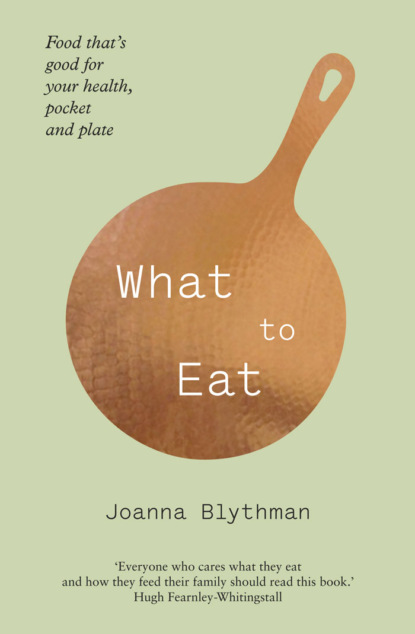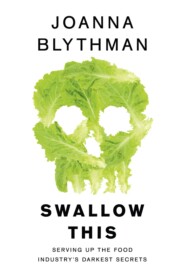По всем вопросам обращайтесь на: info@litportal.ru
(©) 2003-2024.
✖
What to Eat: Food that’s good for your health, pocket and plate
Автор
Год написания книги
2019
Настройки чтения
Размер шрифта
Высота строк
Поля
Peppers are a brilliant source of the antioxidant vitamins C and beta-carotene which may help neutralize the damage done by harmful free radicals that can predispose the body to disease. Red peppers contain higher levels than green or yellow peppers. Red peppers also contain lycopene, a plant pigment that some research suggests may inhibit certain cancers, and two pigments, lutein and zeaxanthin, that some research suggests are active against macular degeneration, the main cause of blindness in the elderly.
Peppers have a bad track record when it comes to pesticide residues. Government tests regularly find peppers with multiple residues. Occasionally, traces of pesticides not approved in Europe have been found. Pesticide residues in peppers regularly trigger Europe-wide Rapid Alerts to warn regulatory authorities, retailers and wholesalers. This is one vegetable where it is well worth considering buying organic. Pesticides are all but outlawed in organic production and in recent years residues have not been found in organic peppers.
How are peppers grown?
In hot, sunny countries, peppers grow happily outdoors. In Britain, they can also flourish outside, if cultivated in a sunny, sheltered spot in areas with a mild climate. But unless you have a garden, allotment, or market garden source – and even then these are likely to have been brought on in a greenhouse before being planted out – any peppers you buy will have been cultivated using hydroponic techniques in a state-of-the-art glasshouse. Cucumbers, aubergines and some salad leaves are also cultivated using the same techniques.
Glasshouse production is about as far away from any notion of ‘natural’ growing as it is possible to get. Production is not pegged to the seasons but can start at any point in the year as the glasshouse creates an artificial climate-controlled environment that can be heated in winter or cooled in summer. Computerized sensors monitor temperature, humidity, carbon dioxide and light, automatically adjusting levels in response to variations in both external and internal climate.
The essence of hydroponic systems is that plants grow not in earth, but in an alternative growing medium – gravel, coconut fibre, clay pebbles, granular rockwool (like fibreglass), perlite (volcanic glass granules), vermiculite (a mineral), even air – and are fed nutrients in a liquid solution. There are various hydroponic techniques. The nutrient solution can be sucked up into the growing medium using a wick, dripped on to the base of each plant, pumped to the roots, or misted directly on to the roots. The same nutrient solution can be used throughout the plant’s growing cycle, but by varying the formula to support different stages of growth – root, leaf, flower – the plants can be encouraged to provide a heavier crop. For more information on the pros and cons of this type of production see TOMATOES/How are tomatoes grown?
Are peppers a green choice?
It’s hard to think of any vegetable that is quite so monotonously standardized and so devoid of interesting variations and biodiversity as the bell pepper. This dull, techno-pepper plant can be made to grow resolutely and produce heaps of watery fruits in its glasshouse world, come wind come shine, so it rules the roost. Supermarket cosmetic specifications compound the insult. Thanks to them, our larger-than-life peppers might as well be cloned as they share identikit proportions and gleam like fake plastic vegetables.
The whole pepper category is ripe for innovation. The pity is that there are many more interesting sweet pepper varieties that could be cultivated and which are still widely grown in southern and eastern Europe and the Middle East. Seeds for a more biodiverse, and genuinely varied, range of peppers are available for home-growing. If you have access to peppers from a domestic greenhouse, allotment or garden, then you may get a flavour of them.
Glasshouse cultivation raises a number of environmental issues (see TOMATOES/Are tomatoes a green choice?).
Where and when should I buy peppers?
Imported peppers, usually Dutch or Spanish, are available all year round. English peppers come on to the market from March until October.
AN APOLOGY FOR A PEPPER?
Peppers were an alien vegetable (or more correctly, fruit) until the 1960s and 1970s when they earned the patronage of distinguished cookery writers such as Elizabeth David and Jane Grigson, who testified to how delightful they could be when consumed on their home turf. By the 1980s, our sweet pepper market had been more or less sewn up by the Dutch horticultural industry, which kept us supplied with a never-ending supply of the glasshouse-grown sort. Neither Spanish nor English-grown pepper growers have ever really challenged its supremacy. Britain’s meek acceptance of what southern countries might see as an apology for a pepper may have something to do with the fact that our experience of eating the sun-grown, hot-country sort was limited to foreign holidays, so we were less aware of how different, and how much more rewarding such peppers might be.
The sheer dogged reliability of unseasonal hothouse peppers has won them a near invincible place in our vegetable repertoire. At any point in time, while wholesale markets and suppliers will have fluctuating stocks of other vegetables, they will always be able to supply peppers. ‘Mediterranean vegetables’, showcasing the pepper, have become a menu cliché. Ratatouille, roasted peppers and red pepper soup have become thoroughly embedded in Britain’s vegetable lexicon.
Will peppers break the bank?
Peppers are a commodity glasshouse crop, but this doesn’t stop supermarkets charging unjustifiably high prices for them. As a general rule, peppers are cheaper in greengrocers and from market stalls. Don’t be put off by peppers that look a little soft and wrinkled, instead snap them up at bargain prices. They will taste better than their smooth, still waterlogged, more expensive equivalent. Don’t turn up your nose at discounted peppers that are soft or rotten in parts. Peppers are one vegetable where you can happily cut out the bad bit without any off flavours tainting the rest.
Potatoes
Potatoes are a bit like a dependable old friend. They are always there for you. Whether it’s a plate of home-made chips, an oozing gratin or a buttery potato purée, potatoes offer solace and comfort. You can snuggle up with them like a warm quilt. Too often used in a routine way as a ubiquitous, stodgy sidekick to the main act, potatoes have patrician potential and can rise to the special occasion when cooked thoughtfully and creatively.
For cooks, the crucial distinction in potato type is between waxy (firm flesh, good for salads) and floury (more granular, good for roasting and mash), although some varieties (Desiree, Wilja, Romano) fall between these two categories. The mainstream potato industry grades potatoes on a scale from one (waxy) to nine (floury), but most commercial effort goes into developing and marketing a few ‘all-purpose’ varieties.
The flavour and texture of potatoes come down to a combination of the variety grown and the growing method, but even the best grower can’t make duff varieties taste of much. Our shelves are loaded with potatoes that look the part, but disappoint on the flavour and texture front. Under the influence of supermarkets, plant breeders have developed potatoes for yield, processing quality and appearance. They must be free from deep-set ‘eyes’, all similarly shaped, and have no knobbly bits, which instantly knocks out many of our distinguished traditional varieties. Eating quality has barely entered the brief. Old varieties (see Potatoes with a sense of place), prized for their flavour, their flesh of various colours and their distinctive textures, have lost out to anonymous-tasting, white-fleshed modern varieties, such as Maris Piper, Santé, Estima, Cara, Rocket and Nadine, that produce high yields when given lots of water and chemical fertilizers.
If you want real spuds, not duds, then seek out varieties with character and personality. Among the most readily available, the best-tasting waxy varieties include Charlotte, Nicola, Jersey Royal, Pink Fir Apple, Yukon Gold and La Ratte; the best-tasting floury varieties include Golden Wonder, Marfona, King Edward, Duke of York, Valor, Cosmos and Kerr’s Pinks.
Things to do with potatoes
• Roast unpeeled potato wedges in olive oil and generously dust just before serving with smoked paprika and sea salt.
• Vary the classic gratin Dauphinois (thin slices of floury potatoes baked with cream, nutmeg and garlic) by substituting turnip, Jerusalem artichoke, celeriac or parsnip for half the potatoes.
• Greek skordalia – smooth potato, garlic and olive oil purée – served warm makes an unusual dip to serve with crudités.
• A couple of finely chopped anchovies turns a basic, creamy gratin into that full-bodied Scandinavian dish, Janssen’s temptation.
• For a cheap, but interesting starter, purée potatoes with olive oil and a little poached salt cod to make a French brandade. Serve with rustic toast brushed with olive oil.
• Thinly sliced potatoes and onions baked with stock – pommes Anna – make a lighter gratin.
• Home-made potato gnocchi beat the ready-made vacuum-packed sort hands down.
• Instead of the usual mayonnaise approach, make a more Germanic potato salad by dressing still-warm waxy potatoes with oil, wine or cider vinegar and lots of smooth mustard, then add fresh dill and chopped gherkins. Serve with crisp lardons of bacon on top, or with ham or smoked meats.
• Grate par-boiled waxy potatoes, season well with sea salt and pepper and shallow fry in thin, flat piles to make crunchy Swiss rosti.
Are potatoes good for me?
Potatoes are best thought of as a starchy carbohydrate food, an alternative to rice or pasta, rather than as a vegetable. Potatoes do contain some vitamin C, which supports the immune system, and this makes them nutritionally preferable to other popular starchy foods like couscous, pasta and white rice. Vitamin C levels are higher in new potatoes (the thin-skinned sort) than in older potatoes (the thicker-skinned sort). They also contain useful amounts of vitamin B6, which is necessary for metabolizing the amino acids in protein and the formation of red blood cells; vitamin B1, which is needed for healing and the smooth running of the nervous system; iron, which helps prevent anaemia; and folate, which helps prevent birth defects.
Like other starchy foods, potatoes do release sugar rather rapidly into the blood and this can encourage a surge in the fat storage hormone, insulin, which encourages the body to lay down fat. Different types of potatoes affect insulin in different ways. New potatoes raise your blood sugar level less than older, maincrop potatoes. Older maincrop potatoes are not great for people who want to lose weight, despite all those diet sheets that seek to persuade us that a baked potato is the slimmer’s friend. That said, if you eat potatoes along with foods that contain protein and fat, like meat, fish and eggs, this significantly slows down the release of sugar into the bloodstream.
In the past there have been concerns about residues of pesticides in potatoes, mainly in new potatoes. In recent years, the situation seems to have improved with around two-thirds of potatoes sampled in government tests coming up residue-free. More progressive conventional growers use ethylene gas to protect the potatoes in cold storage, rather than spraying them with post-harvest chemicals. You can reduce your exposure to chemical residues by choosing organic potatoes. One pesticide can be used in organic potato growing, but only in extremely restricted circumstances.
How are potatoes grown?
Potatoes are planted outdoors in rows, and the soil is mounded up around the emerging leaves to encourage the tubers to grow. Organic growers approach the challenge of growing potatoes without pesticides by choosing varieties that are less susceptible to disease, such as Valor, Nicola, Cosmos, Desiree, Charlotte, Raja and Saxon, and, increasingly, by growing the new, blight-resistant organic varieties that are being developed. Instead of using chemical fertilizers, they grow potatoes in long rotations, interspersing them with other crops. Organic potatoes are often planted after a crop such as red clover, that naturally fertilizes the soil, and the soil is then dressed with manure. Jersey Royals, though not organic, are treated with a natural seaweed fertilizer called ‘vraic’.
Most older potato varieties are very prone to blight (see Are potatoes a green choice?), so although they can be grown organically on a back-garden scale, they are susceptible to crop failure when cultivated on a more commercial scale.
Are potatoes a green choice?
An underlying problem with potatoes is their narrow genetic base. There are some 150 different species of potatoes in the Andes where the potato family originates, but all the potatoes grown outside that region come from one sub-species. This lack of biodiversity, or genetic similarity, leaves the world’s crop more susceptible to disease, in particular, blight, the same devastating fungus that caused the Irish potato famine of the 1840s and which destroys 20 per cent of the world’s annual potato harvest.
One solution advanced for blight is genetic modification, but this is extremely controversial. The leading International Potato Centre in Lima, Peru, has imposed a moratorium on planting GM potatoes in South America because of fears that genes introduced into GM potatoes might escape into wild potatoes. Meanwhile, plant breeders in Hungary and Scotland have already come up with a non-GM solution, successfully breeding blight-resistant new varieties, such as the organic Sarpo Mira and Axona, using conventional breeding techniques. These new organic varieties have shown unprecedented blight resistance and also virus resistance, while other supposedly blight-resistant varieties, such as the ubiquitous Sante and Cara, have been wiped out within weeks. Biotech evangelists love to make out that only their industry has the solutions to intractable farming problems like blight, but here’s a glowing example of how it is possible to breed a crop with a desirable trait without using highly unpredictable GM techniques, such as the introduction of antibiotic resistance marker genes, that open the door to major environmental and health risks.
POTATOES WITH A SENSE OF PLACE
For as long as anyone can remember, the potato has been a stalwart ingredient in the British and Irish diet. Back in the Second World War, it was considered such an essential, healthy food that potato growing became a key plank in the British strategy for survival. It figured prominently in the Ministry of Food’s ‘Dig For Victory’ campaign, which enlisted a cartoon superhero, Potato Pete, to encourage the nation to grow and eat more potatoes, successfully doubling the acreage planted. Nowadays, only the Portuguese and the Irish eat more than we do.
Potatoes grow quite well in our climate and Britain has always been a leading centre of expertise in potato cultivation and breeding. Some rare, traditional potato varieties are still in small-scale commercial production, popular with allotment holders and gardeners and very much in vogue with chefs. Taste them blind, and the taste contrast with the standard spuds we eat is striking. They look discernibly different too. Some have deep-set eyes, others thick, netted skin – like the scruffy East End cousins of cosmetic modern varieties. Their skin tones employ a palette of colour from mercury black through rosy pink to midnight blue. Their flesh can be alabaster white, butter yellow, imperial purple, indigo or claret. Their shapes go from elongated and knobbly via oval to round and smooth. Their names have all the interest of a Grand National line-up: Highland Burgundy, Kepplestone Kidney, British Queen, Edzell Blue, Red Duke of York, Purple-Eyed Seeding, Epicure, Shetland Black, La Ratte, Peachbloom, Pink Fir Apple, Red King Edward, Witchill and Mr Little’s Yetholm Gypsy, to mention a few. These are potatoes steeped in history and traditions, potatoes with a sense of place.
Where and when should I buy potatoes?
The potato year begins with the arrival of ‘new’ or ‘early’ potatoes. They are lifted young when they still have thin skins that can be rubbed off with the fingers and their consistency is slightly waxy. In February, imports from Egypt, Israel and Cyprus start arriving in shops, followed by Jersey Royals in March then Cornish and Ayrshire varieties in May and June. If you want to reduce unnecessary food miles, then stick with UK new potatoes: they are worth waiting for. Next come the ‘second earlies’ grown in colder, more frost-prone areas of the UK, followed by early ‘maincrop’ potatoes in August, then the true maincrop potatoes that come on stream in September and October. These maincrop potatoes have a higher dry matter content than earlies and thicker skins. They can be sold directly from the field or kept in cold storage throughout the winter to preserve them until the next year’s home-grown new potatoes become available.
Supermarkets are now stocking a few more interesting ‘heritage’ varieties, but for a better range check out specialist potato suppliers and look out for more unusual, characterful varieties at farmers’ markets.
Will potatoes break the bank?
In early spring, before the new season’s Irish- or UK-grown potatoes are available, imported new potatoes go on sale. These can make the maincrop potatoes from the season before look rather old, but they will still be fine for most purposes – they just need to be peeled – and will cost a fraction of the price commanded by the new, more attractive-looking imports.










